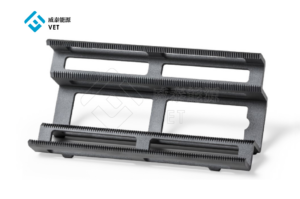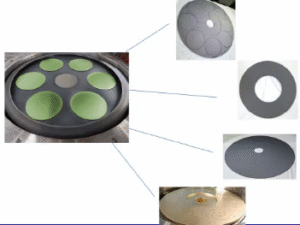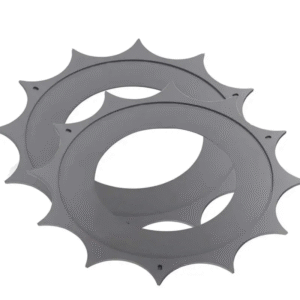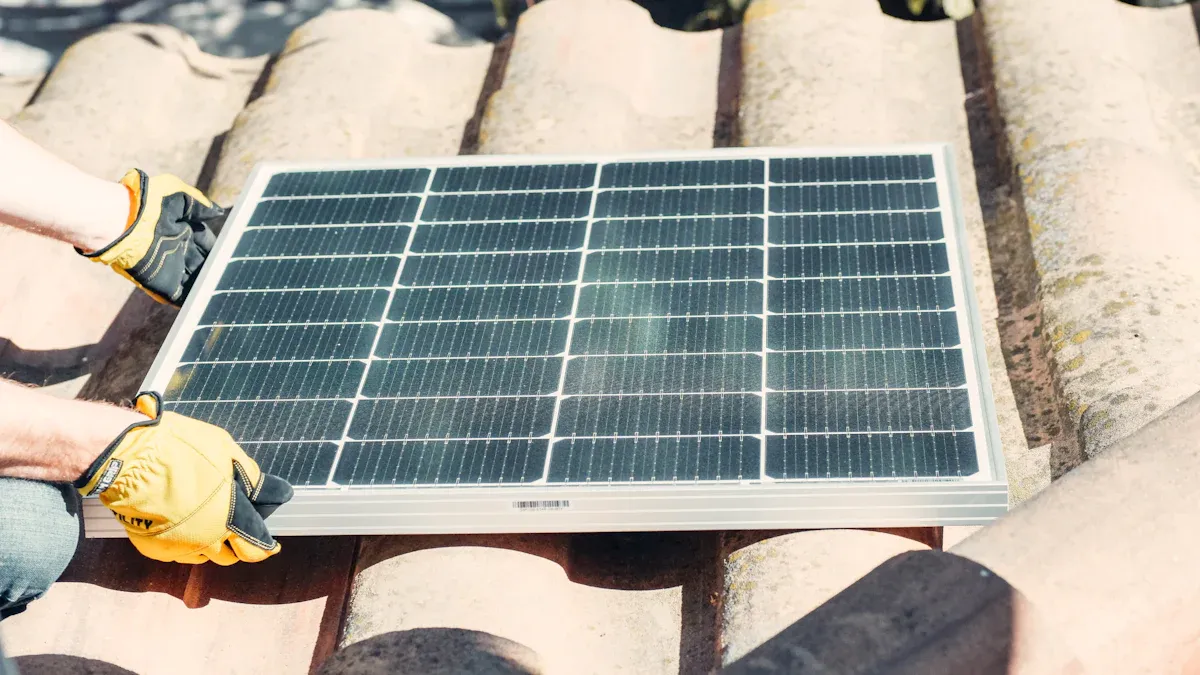
Silicon carbide coatings are driving advancements in solar panel manufacturing by delivering unparalleled efficiency and durability. These coatings, known for their exceptional thermal conductivity and chemical resistance, optimize performance in challenging production environments. For instance, SiC coating-equipped inverters achieve conversion efficiencies exceeding 99%, generating up to 40,000 kWh of additional electricity annually for a 1 MW solar installation. This efficiency reduces maintenance needs by 32% over five years, underscoring the transformative potential of CVD SiC layers applications. By improving heat management and light absorption, ceramic coatings, particularly silicon carbide coatings, support the production of high-performing, sustainable solar panels.
Key Takeaways
- Silicon carbide coatings help solar panels work better by managing heat and absorbing more light. This makes more energy.
- These coatings cut down on repairs and make solar panels last longer. This saves money over time for companies.
- Silicon carbide coatings fit well into current factory systems. Companies can improve their work without big changes.
Unique Properties of Silicon Carbide Coatings
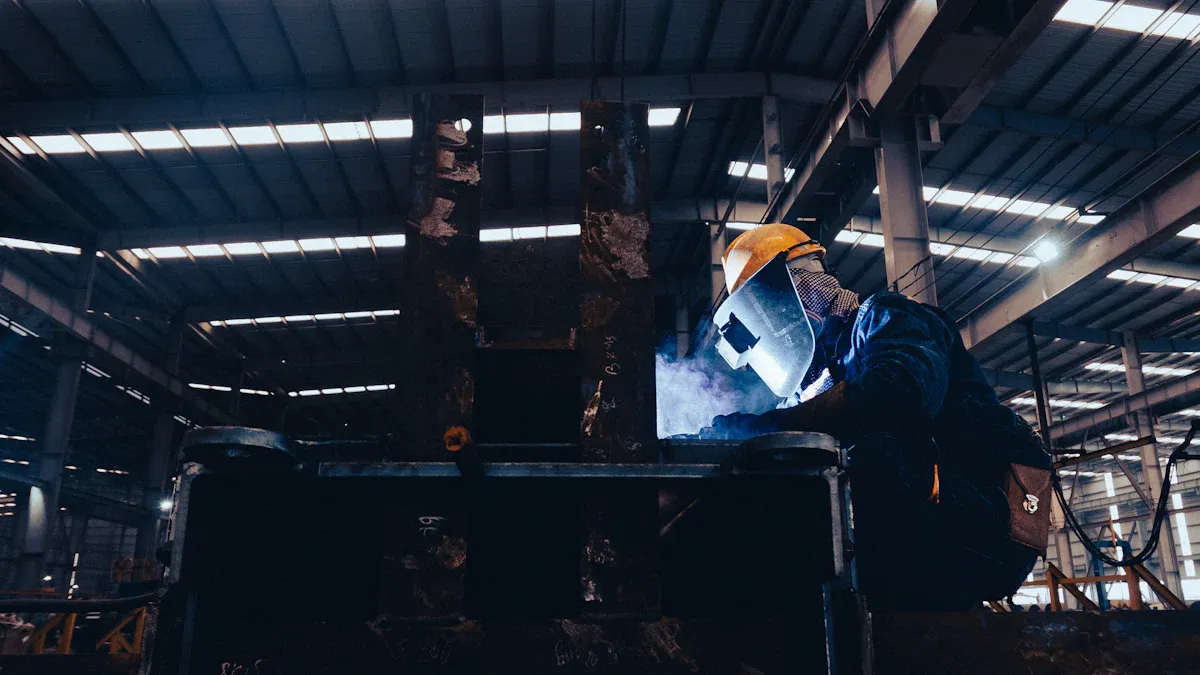
High Thermal Conductivity for Efficient Heat Management
Silicon carbide coatings exhibit exceptional thermal conductivity, making them ideal for efficient heat management in solar panel manufacturing. This property ensures that heat generated during operation dissipates quickly, preventing overheating and maintaining optimal performance. The thermal conductivity of these coatings is validated through Fourier’s law, which calculates heat transfer based on material thickness, heat flux, and temperature differences.
- Reaction-sintered silicon carbide composites demonstrate significantly higher thermal conductivity compared to conventional sintered composites. For instance:
- A 1550 °C sintered sample achieves 196.7 W/m K.
- A 1700 °C sintered sample reaches 194.3 W/m K.
These values highlight the importance of minimizing impurities and optimizing interface microstructures to achieve superior thermal performance. By leveraging these properties, manufacturers can enhance the efficiency and reliability of solar panels.
Exceptional Hardness and Durability for Longevity
The hardness of silicon carbide coatings approaches that of diamond, offering unparalleled wear resistance. This durability makes them ideal for protecting solar panel components exposed to abrasive environments.
“With a hardness approaching that of diamond, silicon carbide ceramic coating offers exceptional wear resistance. This makes it ideal for protecting components exposed to abrasive environments, reducing the need for frequent replacements or repairs.”
This exceptional hardness ensures that solar panels maintain their structural integrity over extended periods, reducing maintenance costs and enhancing their overall lifespan.
Enhanced Light Absorption and Reduced Reflectance
Silicon carbide coatings significantly improve light absorption while minimizing reflectance, which is critical for maximizing the efficiency of solar panels. Their unique surface properties enable them to capture a broader spectrum of sunlight, converting more energy into electricity. This enhanced absorption directly contributes to higher photoelectric conversion efficiency, a key factor in solar panel performance.
Additionally, the reduced reflectance minimizes energy loss, ensuring that more sunlight is utilized effectively. By incorporating these coatings, manufacturers can produce solar panels that deliver superior energy output, even in suboptimal lighting conditions.
Chemical and Environmental Resistance for Stability
Silicon carbide coatings provide exceptional resistance to chemical corrosion and environmental degradation. They withstand exposure to harsh chemicals, acids, and alkalis without compromising their structural integrity. This resistance is particularly valuable in solar panel manufacturing, where components often encounter reactive substances.
These coatings also prevent oxidation at high temperatures, ensuring that solar panels retain their functionality and appearance in oxygen-rich environments. Their stability under extreme conditions makes them a reliable choice for long-term applications in renewable energy systems.
| Property | Silicon Carbide Coatings | Traditional Materials |
|---|---|---|
| Hardness (GPa) | ~35 | Significantly lower |
| Elastic Modulus (GPa) | 340 – 400 | Varies significantly |
| Temperature Impact | Less pronounced drop | More pronounced drop |
This combination of chemical resistance and environmental stability ensures that silicon carbide coatings remain effective and durable, even in the most demanding conditions.
How Silicon Carbide Coatings Enhance Solar Panel Manufacturing
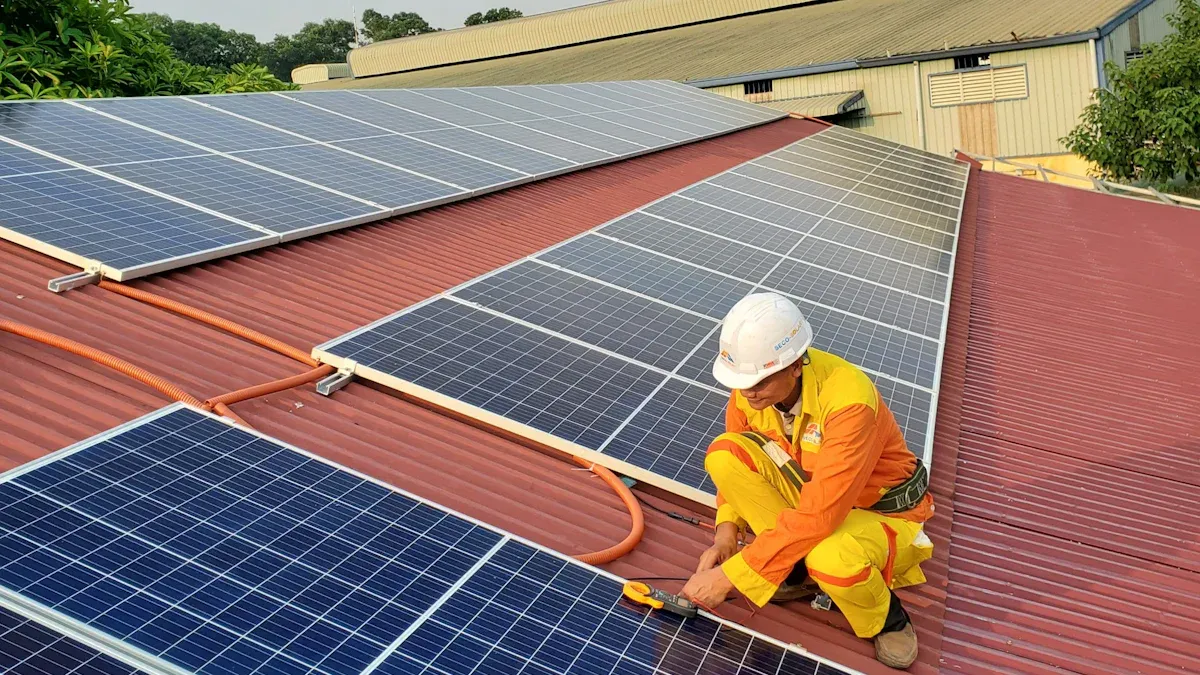
Improved Photoelectric Conversion Efficiency
Silicon carbide coatings elevate photoelectric conversion efficiency by optimizing light absorption and minimizing energy loss. Their high absorption coefficient captures a broad spectrum of solar wavelengths, ensuring maximum energy capture. Low reflectance further enhances this process by reducing sunlight reflection, allowing more light to be converted into electricity. Improved heat dissipation also plays a crucial role, maintaining consistent performance during energy conversion.
- Key benefits of silicon carbide coatings in photoelectric conversion:
- High absorption coefficient for capturing diverse solar wavelengths.
- Low reflectance to increase light absorption.
- Effective heat management to sustain optimal energy conversion.
These properties make silicon carbide coatings indispensable for manufacturers aiming to produce high-efficiency solar panels.
Reduced Light-Induced Degradation
Silicon carbide coatings mitigate light-induced degradation, a common issue in solar panels that reduces their efficiency over time. The coatings’ chemical stability and resistance to environmental factors prevent the deterioration of photovoltaic cells. This ensures that panels maintain their performance levels even after prolonged exposure to sunlight.
“By resisting chemical reactions and environmental wear, silicon carbide coatings preserve the integrity of solar panels, reducing efficiency losses caused by light-induced degradation.”
This durability translates into consistent energy output, making silicon carbide coatings a reliable choice for long-term solar panel applications.
Better Heat Dissipation to Prevent Overheating
Efficient heat dissipation is critical for preventing overheating in solar panels, which can compromise their performance and lifespan. Silicon carbide coatings excel in thermal management due to their high thermal conductivity. They transfer heat away from sensitive components, ensuring stable operation even under intense sunlight.
| Property | Benefit |
|---|---|
| Efficient heat dissipation | Prevents overheating and ensures optimal performance in energy systems. |
| High thermal conductivity | Allows for effective heat transfer away from critical components. |
These thermal properties enable solar panels to operate efficiently in diverse climates, enhancing their reliability and energy output.
Increased Durability for Extended Panel Lifespan
Silicon carbide coatings significantly enhance the durability of solar panels, protecting them from physical wear and environmental stress. Their exceptional hardness shields components from abrasions, while their chemical resistance prevents corrosion. This combination ensures that panels remain functional and efficient over extended periods.
Manufacturers benefit from reduced maintenance costs and fewer replacements, making silicon carbide coatings a cost-effective solution. Panels equipped with these coatings deliver consistent performance, supporting the growth of sustainable energy systems.
Economic and Practical Benefits of Silicon Carbide Coatings
Cost Savings Through Reduced Maintenance and Longer Lifespan
Silicon carbide coatings offer significant cost savings by reducing maintenance requirements and extending the lifespan of solar panel components. Their exceptional durability minimizes wear and tear, even in harsh operating conditions.
- Key cost-saving benefits include:
- SiC ceramic boats in photovoltaic applications last over a year, far outlasting quartz materials.
- Resistance to deformation at high temperatures prevents damage and reduces maintenance frequency.
- Extended operational lifespans offset higher initial production costs, delivering long-term savings.
By incorporating SiC coatings, manufacturers can lower operational expenses while maintaining high performance and reliability.
Seamless Integration into Existing Manufacturing Processes
Silicon carbide coatings integrate seamlessly into existing solar panel manufacturing processes. Their compatibility with current equipment and workflows eliminates the need for costly upgrades or modifications. Manufacturers can adopt these coatings without disrupting production timelines, ensuring a smooth transition to enhanced efficiency. This adaptability makes SiC coatings a practical choice for companies aiming to improve their operations without incurring additional overhead.
Enhanced Safety and Reliability in Solar Panel Production
SiC coatings enhance safety and reliability in solar panel production by offering superior mechanical integrity and corrosion resistance.
| Property | C/C–SiC Composite | Traditional Alloys |
|---|---|---|
| Mechanical Integrity | Maintained | Typically suffers from uniform corrosion |
| Corrosion Resistance | Excellent | Poor |
| Reaction with Molten Salt | Minimal | Significant |
Advanced testing methods, such as thermo-mechanical fatigue and creep tests, confirm the coatings’ ability to withstand extreme conditions. These properties ensure safer and more reliable manufacturing environments.
Contributions by Ningbo VET Energy Technology Co., Ltd in Advancing SiC Coating Applications
Ningbo VET Energy Technology Co., Ltd has made significant contributions to the development of SiC coatings.
| Contribution | Description |
|---|---|
| Advanced CVD SiC Coatings | Enhance durability and lifespan of semiconductor fabrication equipment, reduce contamination, and provide long-term cost savings. |
| Integration into Products | Used in graphite susceptors and wafer boats to improve efficiency and reliability of semiconductor devices. |
Their innovative solutions have set new benchmarks in the industry, driving advancements in solar panel manufacturing and ensuring sustainable energy solutions.
Silicon carbide coatings are transforming solar panel manufacturing by delivering unmatched efficiency and durability. Their high thermal conductivity and chemical resistance ensure long-term performance.
- The SiC coating market, valued at $1.53 billion in 2022, is projected to grow at 18.5% CAGR by 2030, reflecting their critical role in renewable energy.
Ningbo VET Energy Technology Co., Ltd leads innovation in this field, driving sustainable advancements.
FAQ
What makes silicon carbide coatings ideal for solar panel manufacturing?
Silicon carbide coatings offer high thermal conductivity, chemical resistance, and durability. These properties enhance efficiency, reduce maintenance, and extend the lifespan of solar panels.
How do silicon carbide coatings improve photoelectric conversion efficiency?
Silicon carbide coatings optimize light absorption and reduce reflectance. These features maximize energy capture, ensuring higher electricity output from solar panels.
Can silicon carbide coatings integrate into existing manufacturing processes?
Yes, silicon carbide coatings seamlessly integrate into current workflows. Their compatibility eliminates the need for equipment upgrades, ensuring smooth adoption by manufacturers.


